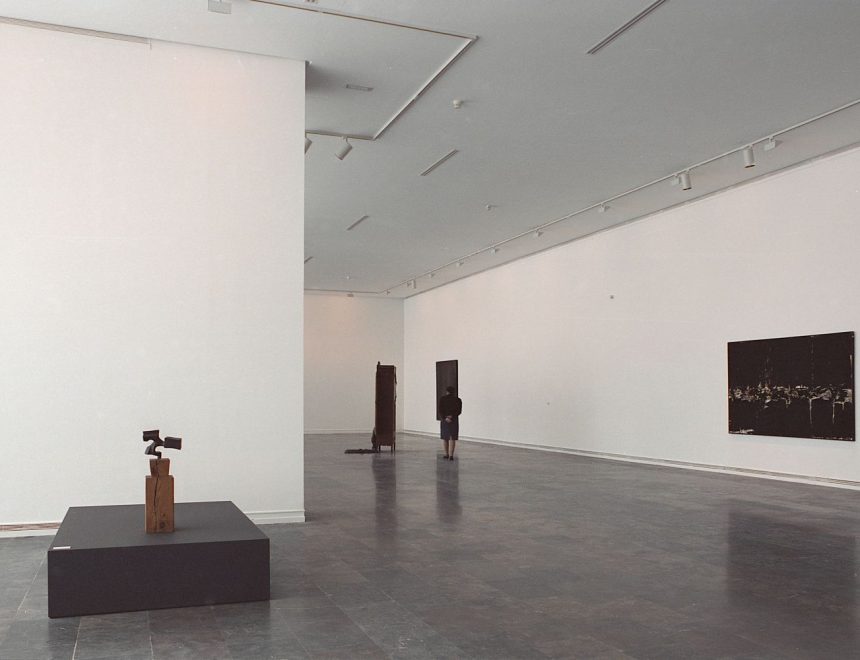Informalism in the IVAM’s collections
Chillida, Millares, Saura, Tàpies
Informalism has a relevant chronological place in the IVAM’s collection, between works and documents representing the historical avant gardes on the one hand and Pop art on the other; both of these being fundamental pillars of the museum’s heritage. Informalism uses abstraction to touch on deep aspects of the human condition with materials from the artists’ immediate environment. From different perspectives, it shows the implicit contradiction between individual creative freedom, and the absence of collective freedoms during the Franco dictatorship.
Spanish art’s leading role during the interwar period (1918–1933), with Pablo Picasso, Juan Gris, Julio González and Joan Miró, regained its international dimension after the 1958 Venice Biennale owing to the prizes awarded to Eduardo Chillida and Antoni Tàpies. Informalism from then on adopted a militant stance that turned it into a regenerative movement in modern art. Tàpies, Antonio Saura and Manolo Millares were at the forefront of the rebirth, which reached its peak from 1956–1964, and were given high status as solid values in the international art world. Their artistic careers during those years and after, when each artist developed their own definite, autonomous path, made them key figures of this artistic tendency that combines tradition and innovation, inner struggle and public expressiveness. Likewise, Chillida, who always maintained a coherent idea of sculpture, brings together the archetypes of Basque culture with the tradition of modern sculpture. The proximity of autochthonous elements such as an awareness of territory, the recuperation of the symbolic and materiality, fits in precisely with the industrial techniques of modern and contemporary sculpture.






